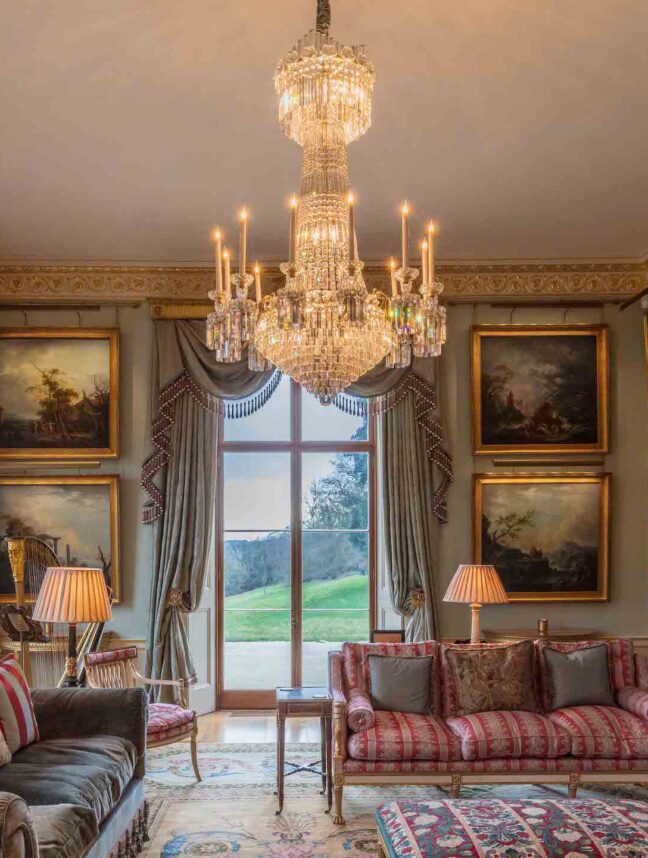Fileman Antiques are one of the world’s foremost specialists in glass and chandeliers – and their experience spans the entirety of the electric age. Effect Magazine’s Dominic Lutyens speaks to the current head of the family firm to hear their story.
With the dawn of the electric lighting era in the 1870s, light fittings became simpler and more streamlined. But one mover and shaker in the lighting world – Brighton-based electrical engineer Morris Fileman – counter-intuitively recognised the romantic beauty of more traditional, ornate light fittings, and was determined to preserve them.
Morris could have been swept along by the late-19th-century mania for modernisation. As an adventurous 21-year-old, he travelled to New Zealand and oversaw the installation of its first electricity-generating plant. Back home, he electrified Brighton’s Palace Pier and many of the city’s hotels and theatres. But while beautifully decorative Regency and Victorian chandeliers were being unceremoniously dumped in the race to modernise interiors, Morris sold antique lighting at his shop-cum-workshop until retiring in the 1940s.
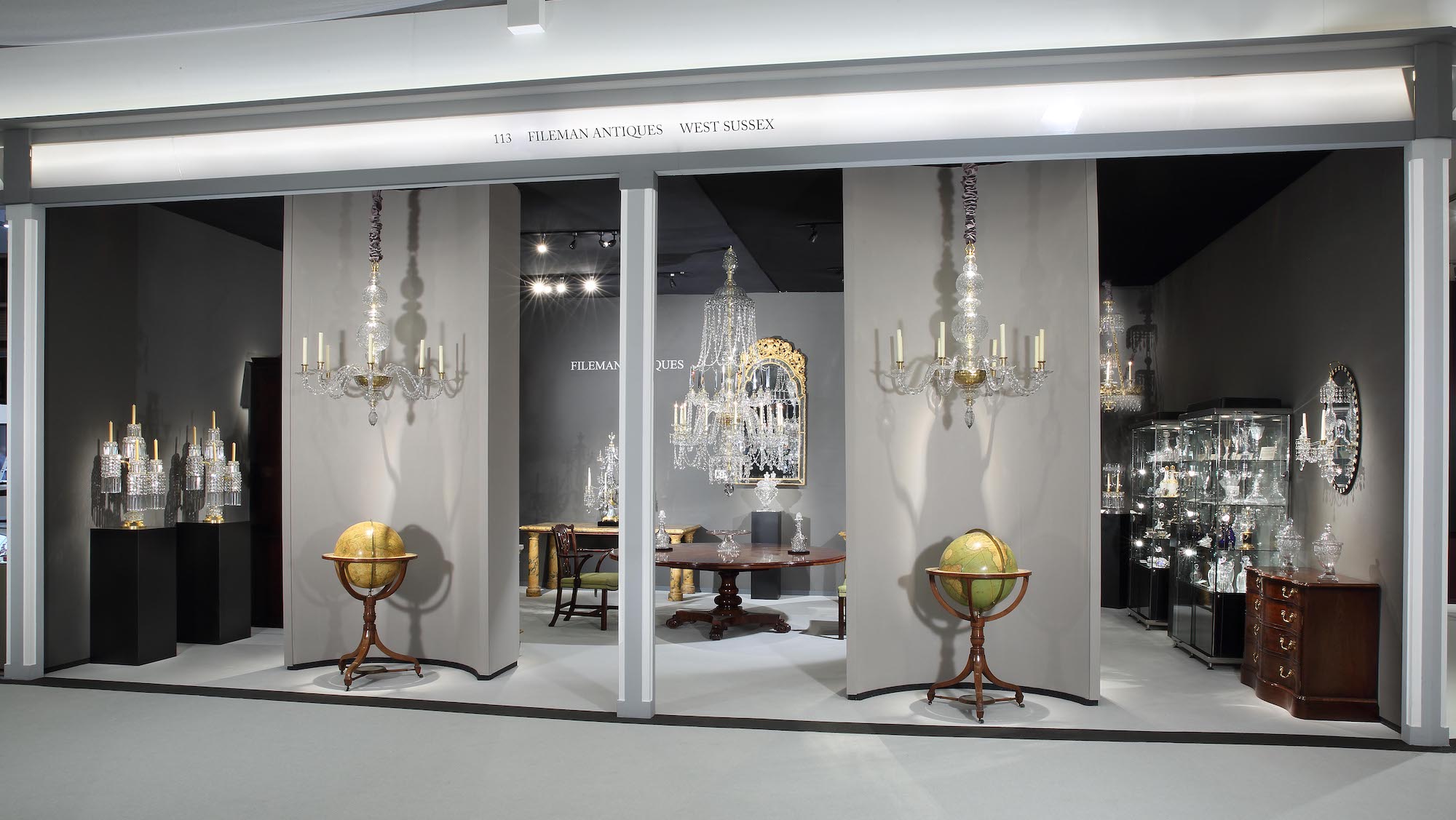
This love of old-world chandeliers clearly runs in the family: Morris’s son John expanded the Brighton business’s repertoire by also selling 18th and 19th-century glassware and French paperweights until his death in 1962.
The company remains family-run to this day. It’s now headed up by David and his sons John, Adam and Daniel, all directors, while David’s grandson, James – the fifth generation of Filemans to run the firm – recently joined it, too.
David still fondly remembers looking on, fascinated, as his father – and mother, Vera – meticulously restored chandeliers. He also vividly recalls visits to Morris’s workshop, where they’d find components to replace missing or damaged ones. By 1975, the business had greatly expanded, and David and his wife, Sandra, relocated to its present premises in the historic, scenic town of Steyning, West Sussex.
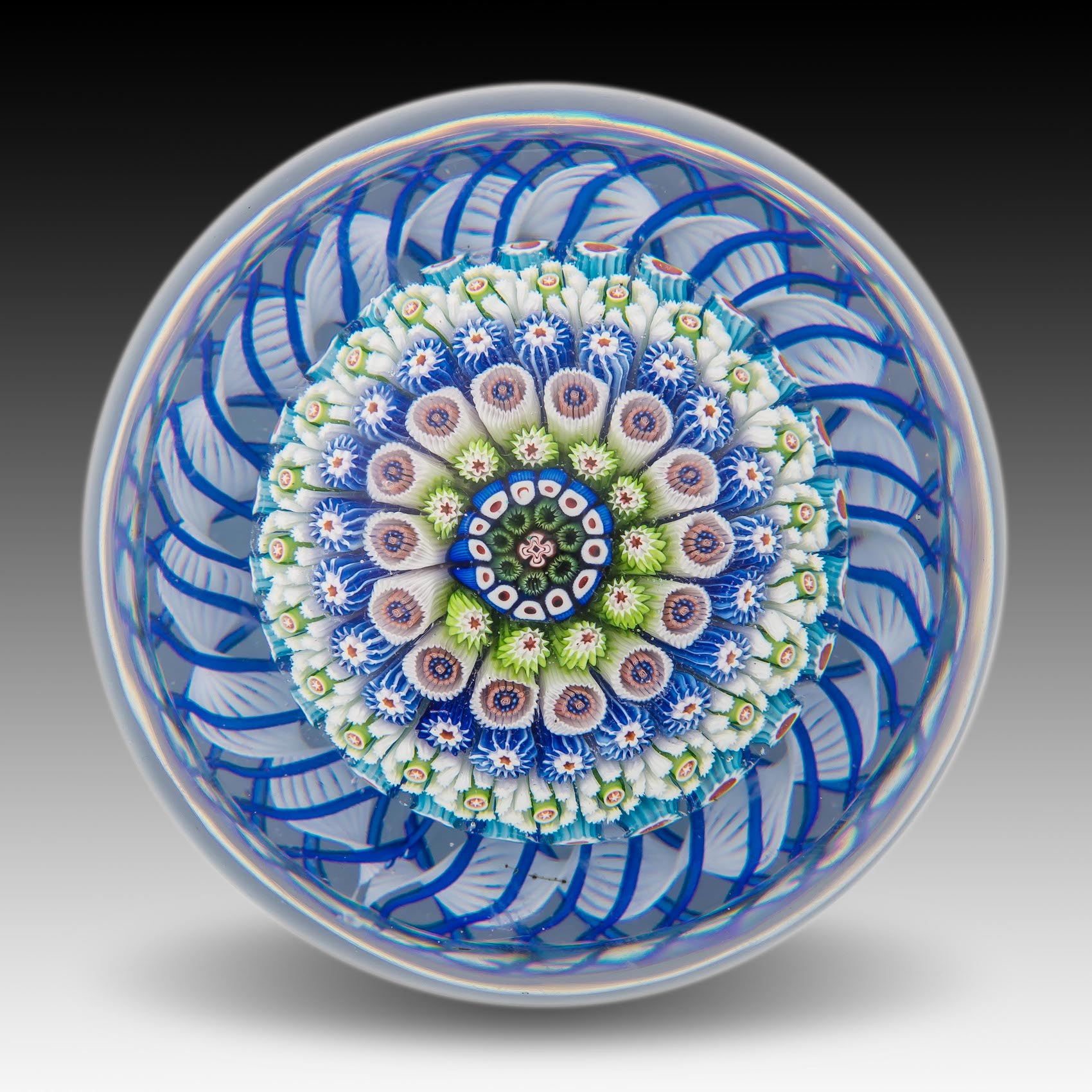
“We all work together,” says Daniel. “We’re a five-man band.” Not surprisingly, the most popular spots for installing chandeliers, he tells me, are where they make a real statement: in formal reception rooms or large spaces – indeed, anywhere their spectacular presence makes the greatest impact.
“They’re often sought-after for stairwells, where they can be admired from all angles,” notes Daniel, adding that the company also stocks collectible English glassware, such as 18th-century wine glasses. “People collect different kinds of wine glasses. For example, they might look out for ones with coloured twisted stems.”
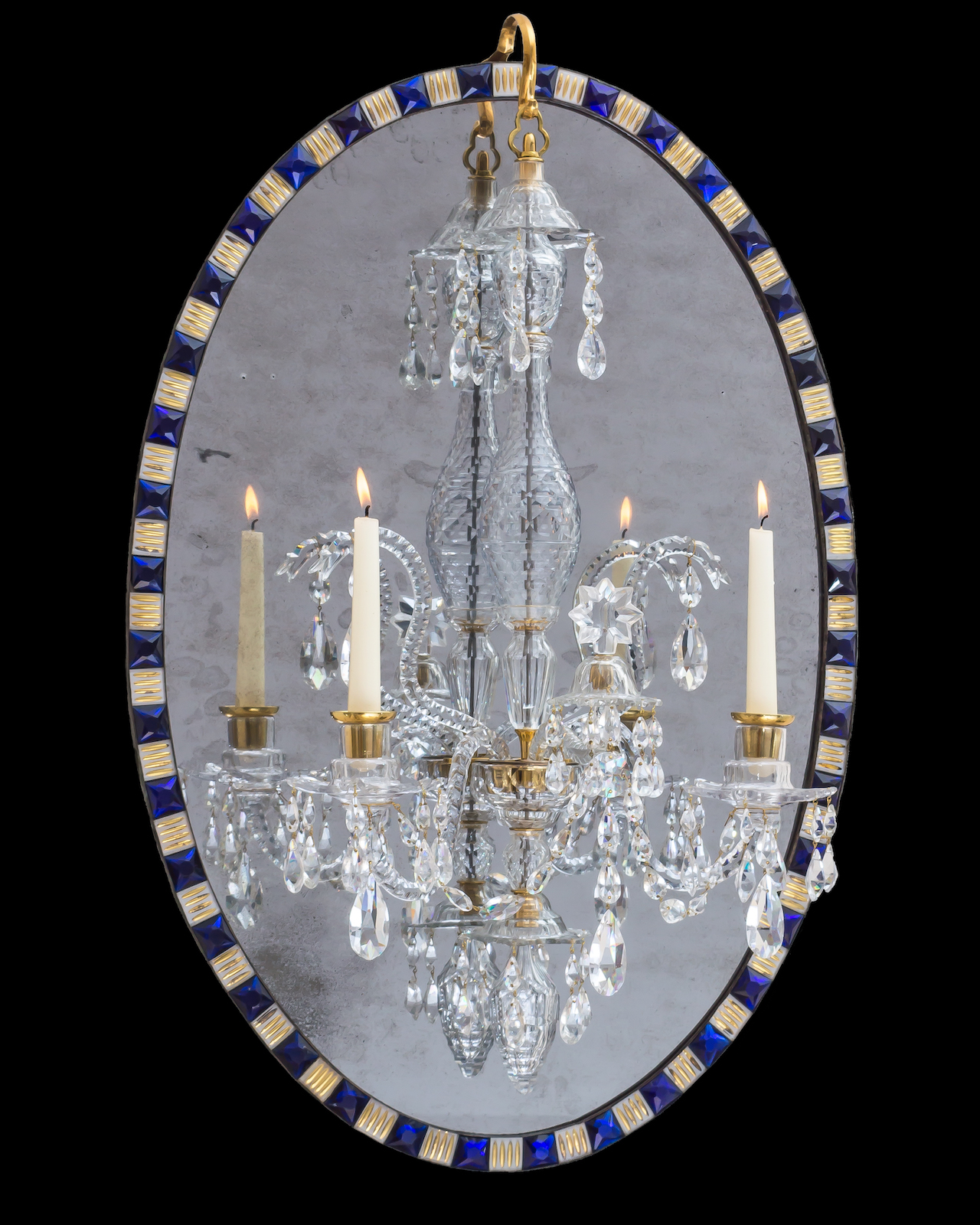
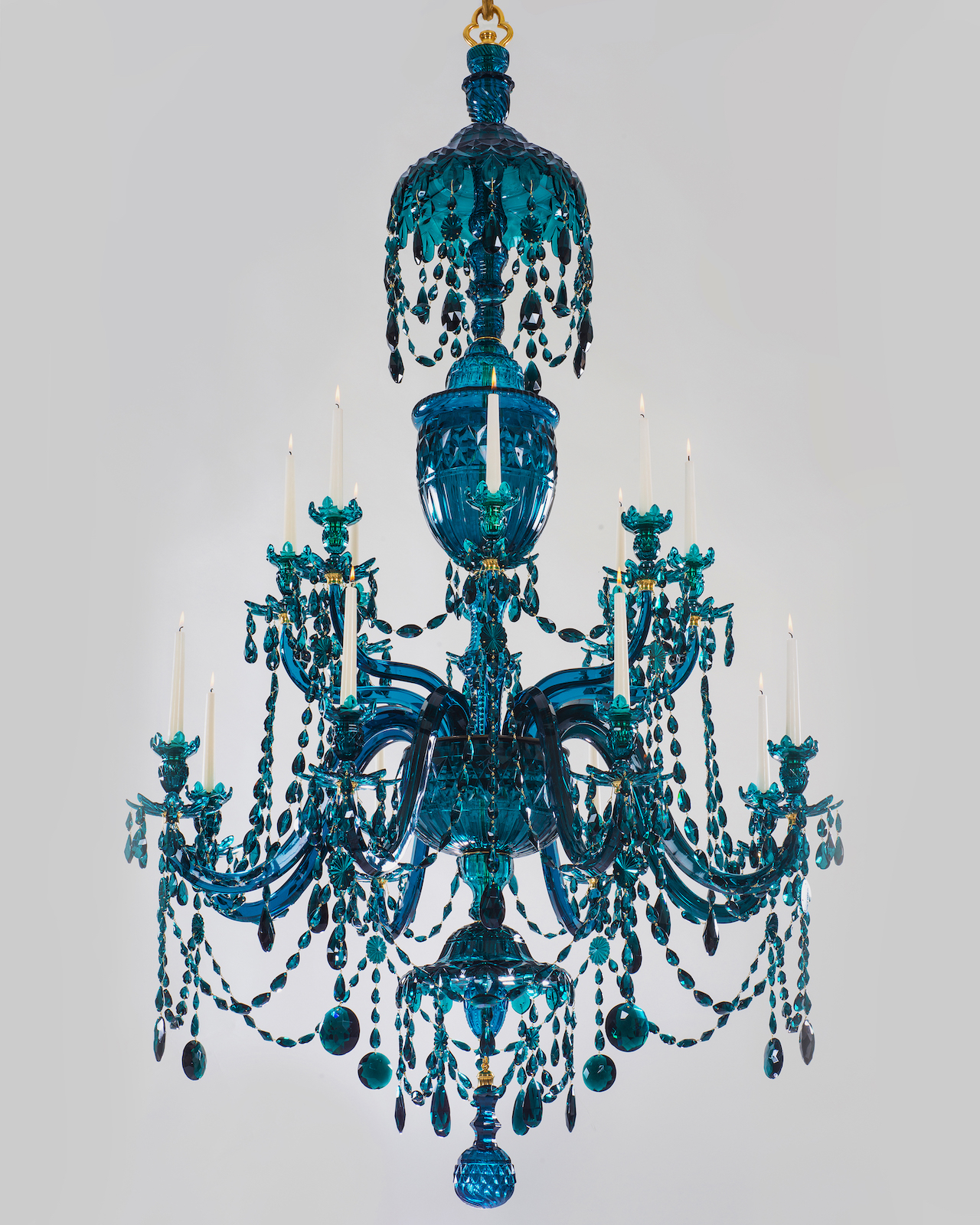
The chandelier, which evolved from the candelabra, was invented in the medieval period. More complex chandeliers adorned palaces and homes of the nobility from the 15th century. The word chandelier, which derives from the French word chandelle – meaning candle – first entered the English language in 1736. When lead crystal began to be used to make chandeliers in the 18th century, the discovery that they scattered animated light to atmospheric effect resulted in the cut-glass chandelier becoming the dominant lighting style from about 1720 to 1900 – the timeframe Fileman Antiques now specialises in.
To the uninitiated, chandeliers might look similar to one another. But their structure and design are highly intricate and varied. Chandeliers were designed to complement the style of interior they were destined for and as such, mirror changing styles in interior design.
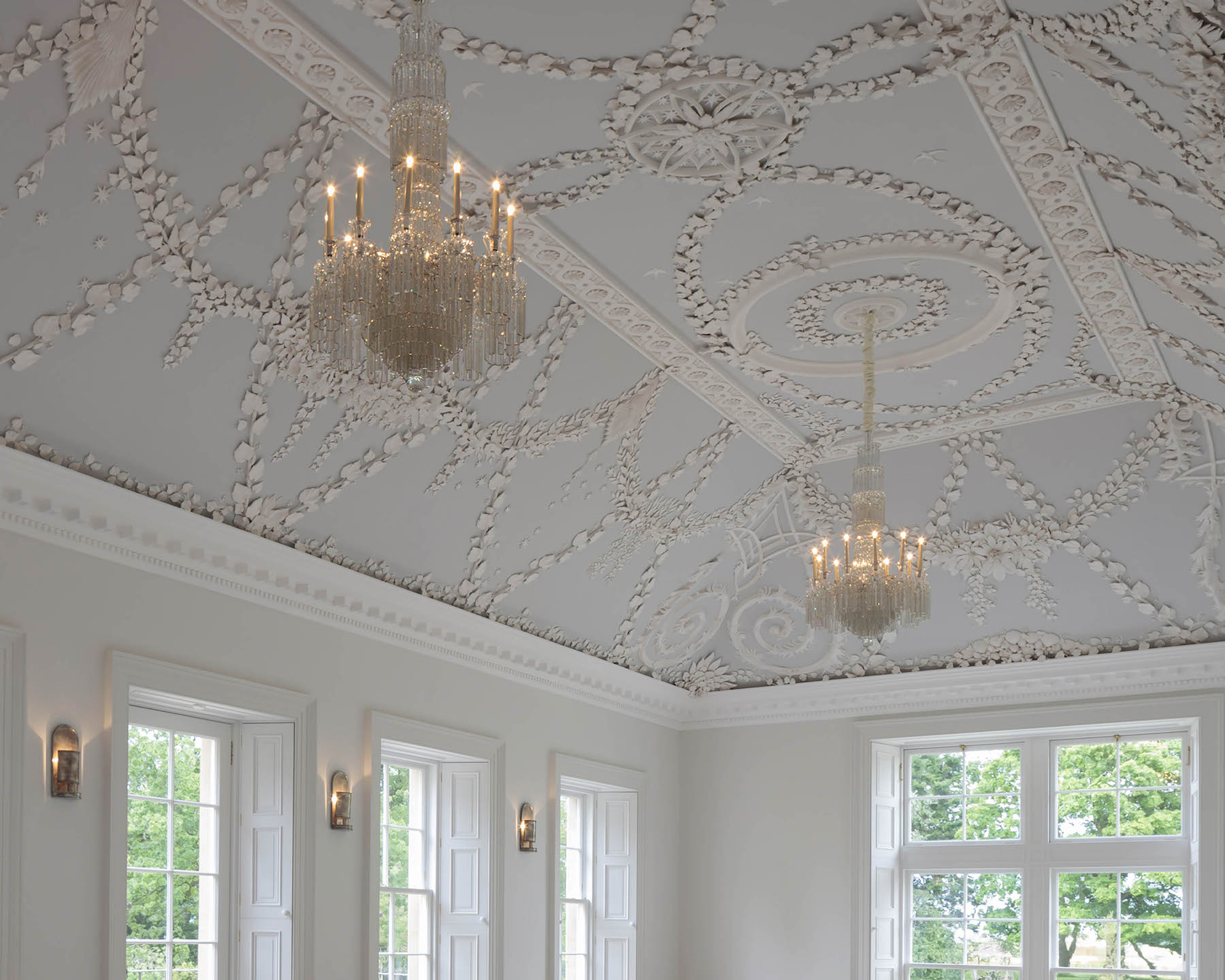
Daniel explains: “Chandeliers from the early Georgian era (1720-1760) were relatively simple, in keeping with the relatively pared-down interiors of that era, while examples produced in the late Georgian era – and ones created while Neoclassical architect Robert Adam was working in the late 1770s – became more elaborate. We call more ornate chandeliers, ones draped with cascades of drops, ‘lacy’.
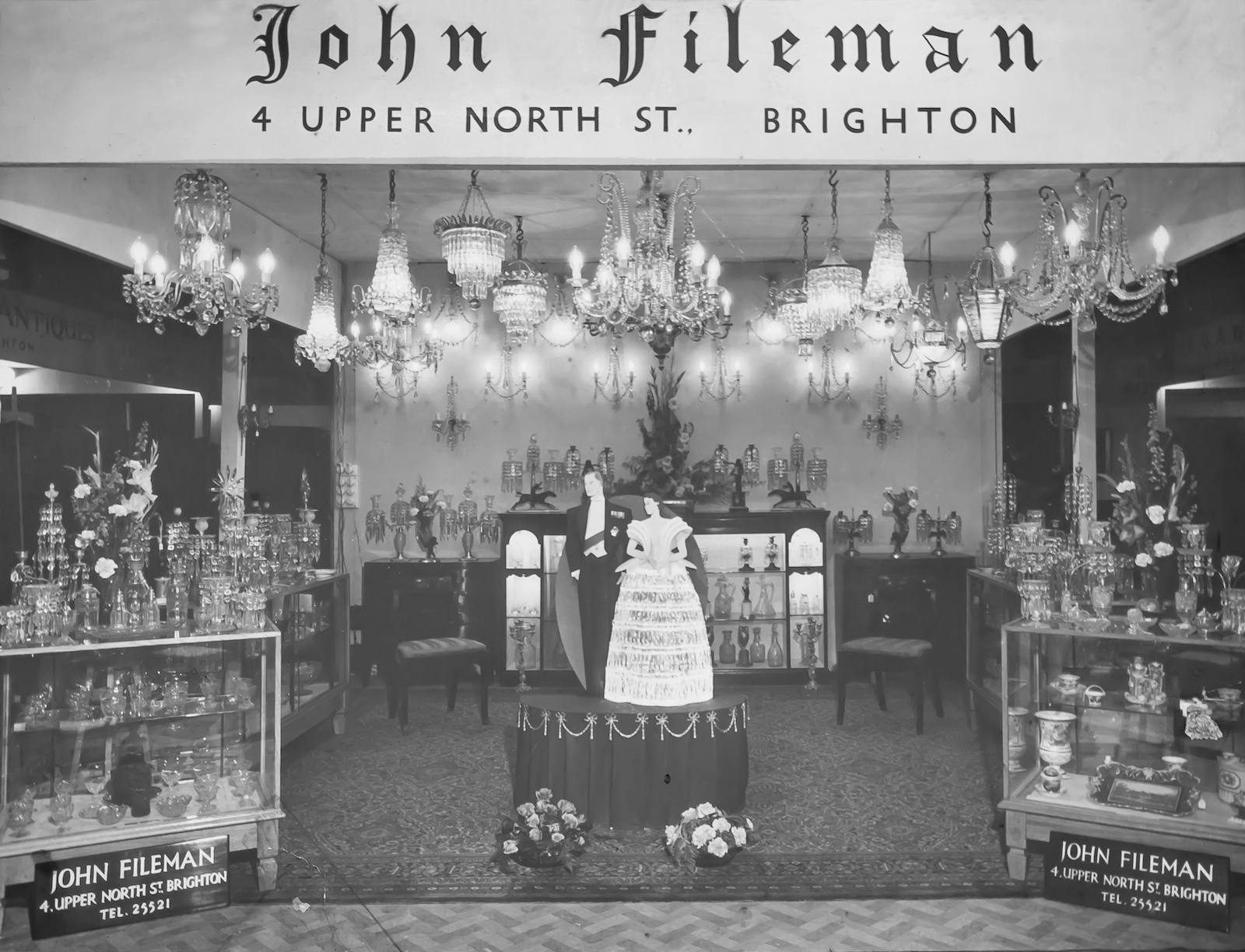
“Georgian, Regency and Victorian chandeliers suspended from ceilings or mounted on walls are our specialism. We shy away from Art Deco ones and other modern equivalents as their quality isn’t good by comparison. The glass in the older ones was of better quality thanks to its higher lead content. This made it softer and easier to shape into the chandeliers’ drops or small glass pieces cut into several forms. Fabulous facets could be created on the drops, which were beautifully finished and polished.”
Just as romantic as 18th and 19th-century chandeliers are the evocative words to describe their constituent parts. Over time, these have generated an extensive glossary. A “crown”, for example, means a circular chandelier reminiscent of a crown, and is usually fashioned from gilded metal or brass, while a “festoon” or “garland” is a sequence of drops.
Fileman Antiques’ directors and staff travel far and wide to acquire chandeliers, many of which are then painstakingly restored. Their main markets are the UK, US, Asia and Australia. “We mainly sell to private individuals, country houses and museums,” says Daniel. “We sell unique, mainly British chandeliers and glassware that not many other businesses stock.”
In addition to showcasing these at its shop, the company participates in prestigious art and antiques fairs. Taking part for the first time last year in multidisciplinary fair Masterpiece in London, its stand made a huge impact, scooping two awards – Outstanding Exhibit for its George II Bronckhorst Castle chandeliers; and Masterpiece Highlight for its George IV coronation urn, made by Perrin, Geddes & Co.
That said, business is often conducted online. In any case, a crucial service provided by the company is installing the chandeliers – a highly skilled, delicate operation. “This service is a major selling point for us,” says Daniel. “We disassemble, pack and transport all the elements. Once the chandeliers have been delivered, the staff reassemble the elements, which are numbered – a complex process. When you rehang a chandelier, all its elements need to be symmetrical.”
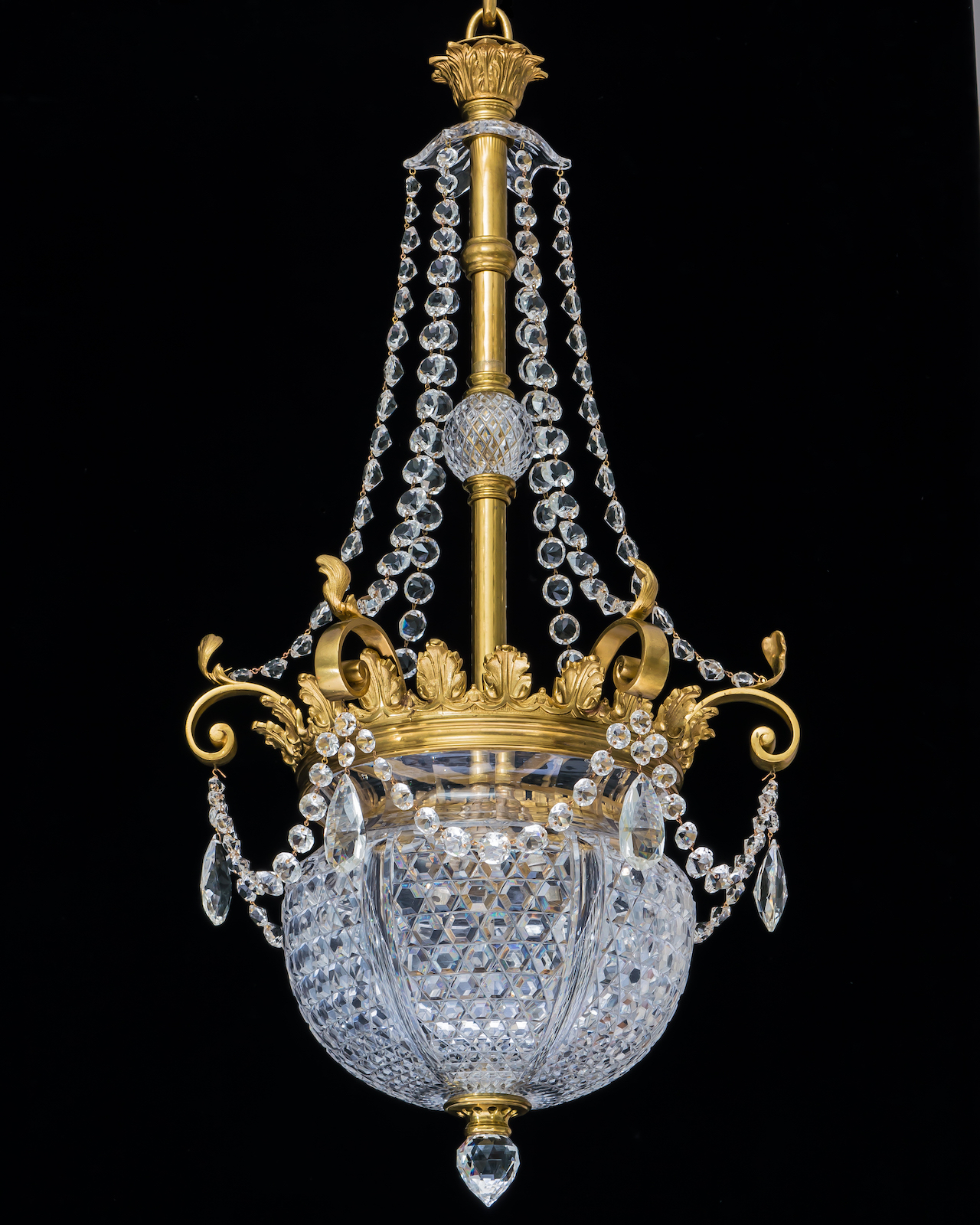
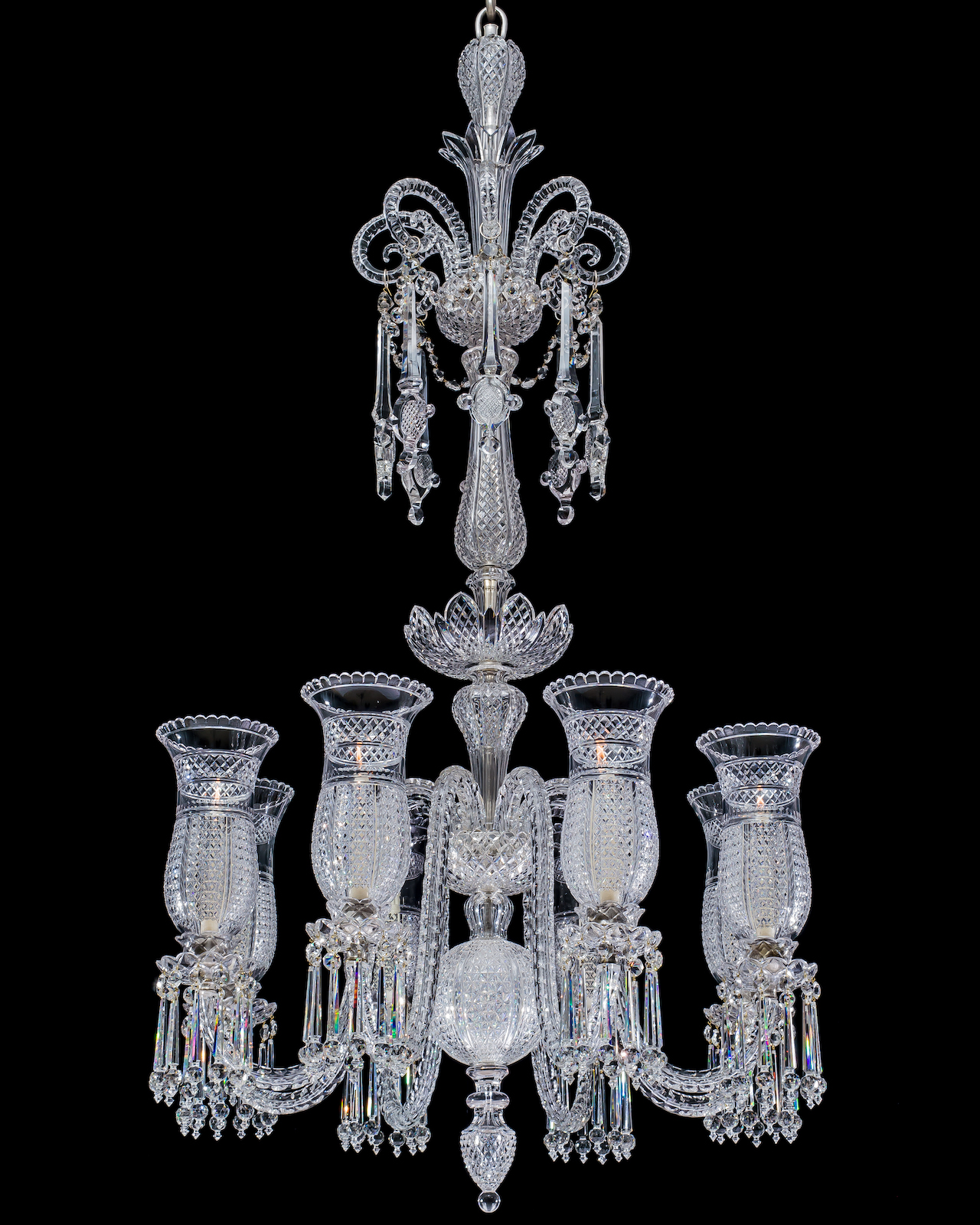
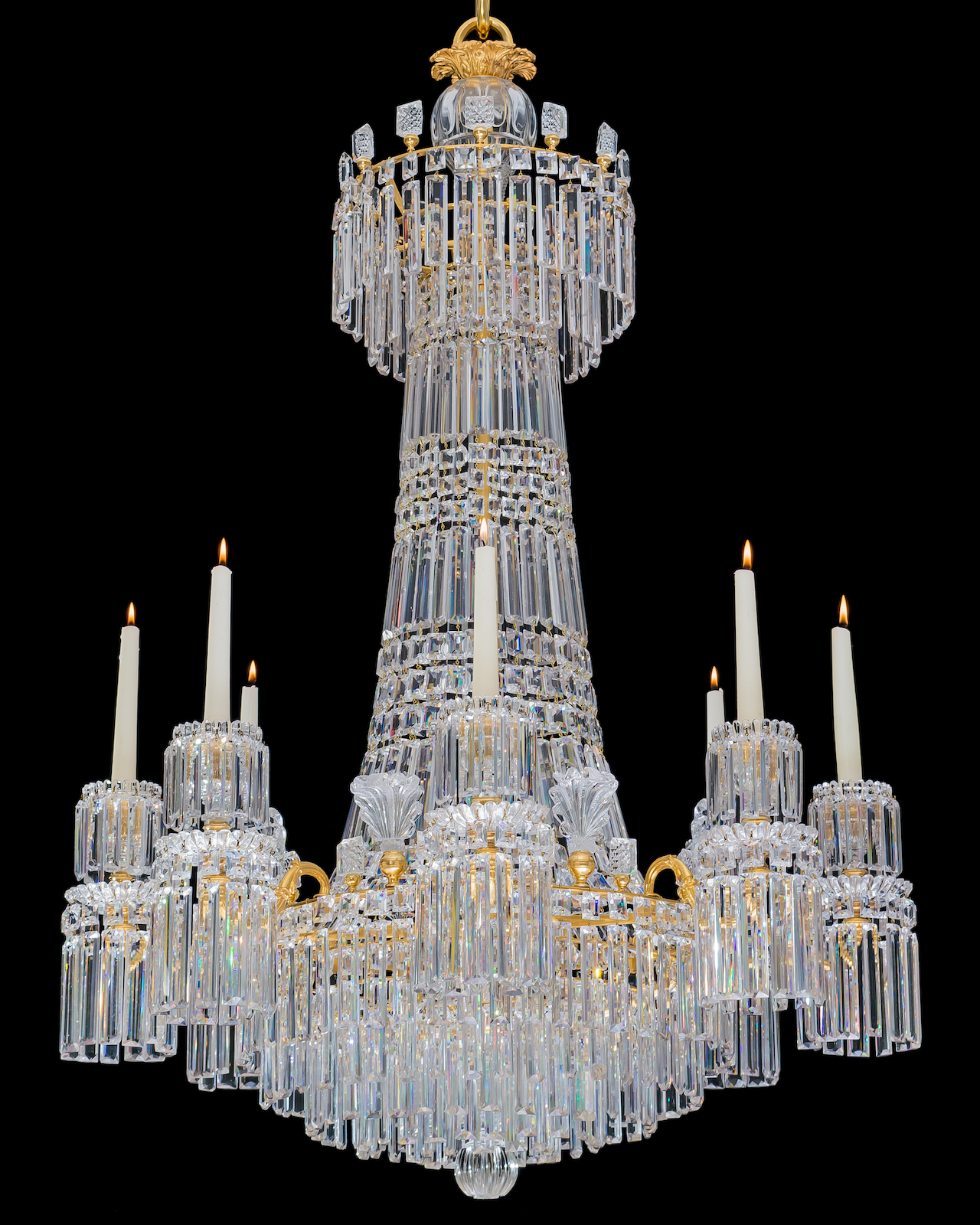
Fileman Antiques also stocks mirrors, jugs, decanters, candlesticks, lamps and paperweights; and visitors to their site will also find potted biographies of illustrious chandelier-makers from the 18th and 19th centuries. Daniel cites three that represent key periods – William Parker (Neoclassical style), John Blades (Regency) and Thomas F&C Osler (Victorian).
When Morris Fileman had his lightbulb moment at the turn of the 20th century and sensed that a market still existed for traditional chandeliers, little did he know that the demand for them remained undimmed. And with the growing trend today for statement lighting of all eras, these more opulent styles look set to bewitch lighting aficionados in decades or even centuries to come.
Read more: Lighting | Interiors | Antiques I Design | Dealers | Interior Designers



